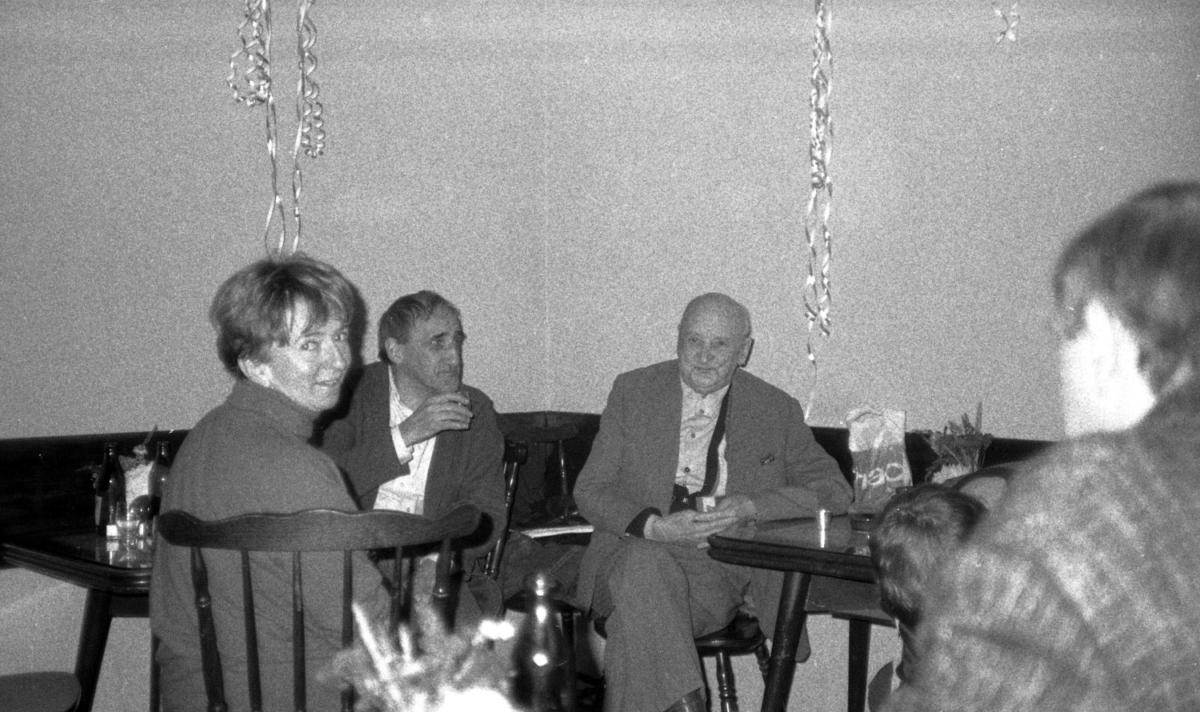
In the nineteen sixties, the Foksal in Warsaw and the Václav Špála in Prague were the only two avant-garde galleries in the Eastern Bloc. Nowadays, the Foksal is known all over the world and its history, perforce, fits the current artistic and political context very well. However, it does so in a way which its co-founders never anticipated, to which I testify in this essay.
In a sense, the Foksal tradition has been continued to this day by the gallery itself in its past home on ulica[1] Foksal and by the plans, both local and international, for the Foksal Gallery Foundation, which is located on ulica Górskiego in Warsaw.
Meanwhile, the distant history of the Foksal of the nineteen sixties has met with an unexpected revival beyond Poland, in France, as a kind of hope for the future.
Many a time, and to the point of boredom, have I told the story of the Foksal, of its victories and defeats, its interpersonal conflicts and standard curiosities.
This essay stands apart from those ranks.
What provoked the change in my view of the story which definitively bound my life to the gallery?
It was a brief remark made not all that long ago by Florian Fouché, an artist I esteem, and it concerned two pressing questions:
How do we remedy the current situation in art and its subjection to the capitalist market?
How do we oppose the fact that, in front of our eyes and, to some extent, by our hands, art is becoming the kingdom of any-old-thing, is permitting the borders between itself and design to be erased, is working hand in glove with the Institutions which it once intended to conquer and is selling its relationship with politics for a meagre handful of small change?
“We need to bring back the Foksal,” Florian Fouché said.
So I am looking at the gallery’s history, a history I know by heart, from the new angle of the Foksal’s potential, topical and oh-so desirable usefulness.
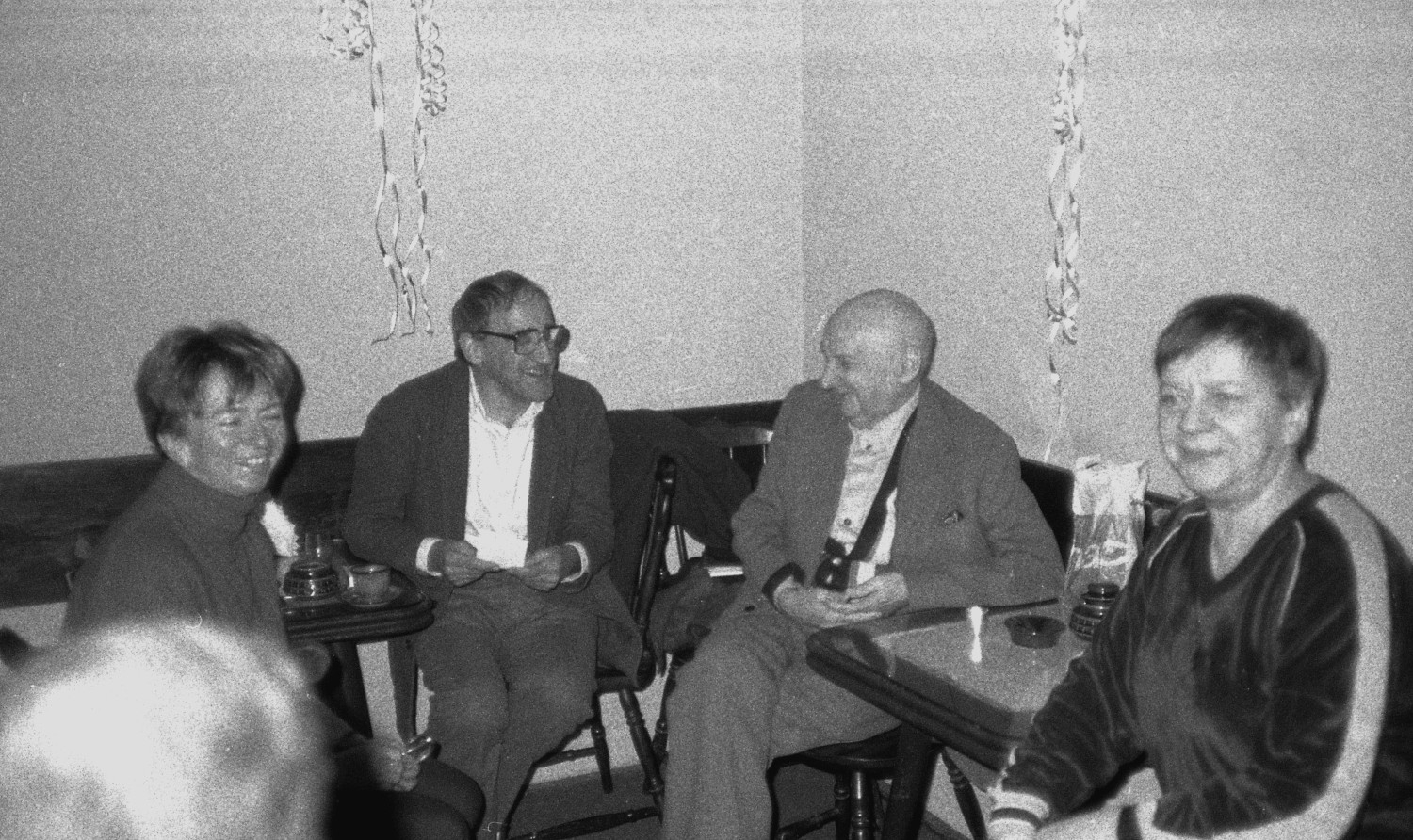
SARP café, 1987. photo: Wiesław Borowski, Foksal Gallery Archive
To begin with, some basic information.
The Foksal Gallery was founded in Warsaw in 1966 at the initiative of a group of artists and critics connected with them. The artists were Henryk Stażewski, Edward Krasiński and Roman Owdzki. The critics were Wiesław Borowski, Anka Ptaszkowska and Mariusz Tchorek. After a while they were joined by Tadeusz Kantor and Maria Stangret.
There were only two independent, avant-garde galleries in the Communist Bloc. One was the Foksal and the other was the Václav Špála, run by Jindřich Chalupecký in Prague.
Under the totalitarian regime in the police state of nineteen-sixties Poland, the Foksal’s daily fare consisted of what one might call subversive activities. The strategy or, more to the point, anti-strategy, was the principle of ‘one-time art’.
Without aiming at a designated goal and without heading for either a brighter future or a general victory, every Foksal Gallery action brought daily pressure to bear on one of the many barriers with which the totalitarian regime restricted personal freedom. In the Poland of the nineteen sixties, the political authorities imposed an intransgressible code of what was permitted. In doing so, they subordinated the whole of reality, public and private, including style… in clothes, in hairdressing, in music, in dance and, generally speaking, in behaviour. Nothing about it was to bring to mind the cultural model namely the ‘depraved West’. So there is nothing strange about the fact that the Foksal’s subversive, public actions won it the status of always being one day away from being closed down, a status which was, truth to tell, an enviable one.
One thing that remains a delicious paradox is the fact that the gallery was established a stone’s throw from the Państwowe Przedsiębiorstwo Pracownie Sztuk Plastycznych (PSP; Fine Arts Studios State Enterprise), the institution charged with creating the visual representations of the regime’s propaganda. Its work took the form of countless mammoth monuments, mosaics and so forth. It would be difficult to think of a more equivocal setting for subversive artistic activities. But we cynically took advantage of the relative protection afforded by the director of that institution, a zealous, card-carrying member of the Communist Party. Having acquired a dubious reputation as far as financial matters were concerned, he decided to seize on the prestige attached to our artists’ gallery in order to salvage his name. It was a personal reason and it pushed him into a situation which spelt a risk for his career within the party. And I do have to say that, to a certain extent, that director, who was by no means stupid, allowed himself to be dragged into situations which he had never foreseen and which were against his own interests.
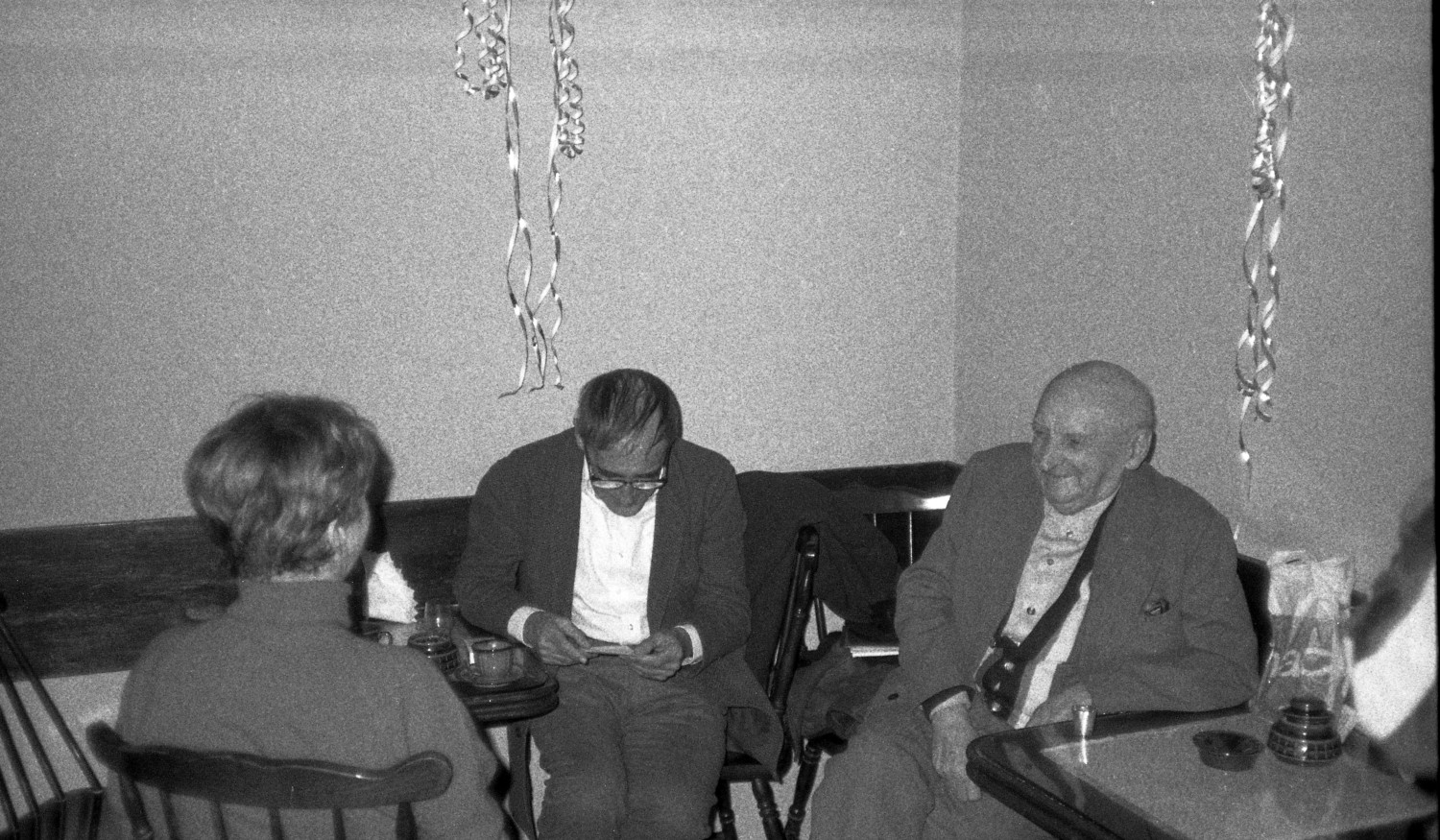
SARP café, 1987. photo: Wiesław Borowski, Foksal Gallery Archive
The PSP gave us a great deal materially, and not only. We were given access to materials we needed and to qualified technical assistance, thanks to which, our artists, pursuing the gallery’s then aspirations[2], were able to create ‘environments’, as we would say today, in the wake of Daniel Buren; in other words, installations in situ. Apart from that, we received something which was truly priceless back then, namely, a printer for our catalogues and leaflets. Naturally, any writings they contained had previously been subjected to our director’s tight, censorial scrutiny. However, as it transpired, he was not obliged to understand everything… or, perhaps, he had no wish to.
The compromise or, more to the point, the game we conducted with the regime enabled the birth of a gallery with an artistic programme which was independent of the central authorities and which promoted artistic actions that were most unpalatable to them. In Eastern Europe this was utterly exceptional.
Let the action entitled Kapelusz czteroosobowy (The Four-Person Hat; 1969) serve as an illustration of the game we conducted. Four of Kantor’s students, wearing a large cardboard box addressed to the Foksal Gallery over their heads, walked barefoot through the streets of Warsaw, weeping and wailing at the top of their voices and dragging rolls of toilet paper, a commodity unavailable in the shops in those days, behind them. Now, beforehand, I had been to the militia[3] station and politely requested “an escort for an artistic event”. There was no trouble in granting my request. We progressed through the streets, with our procession growing as more and more people joined it, raising their voices in anti-government shouts… and all the while, it was being ‘guarded’ by our escort of militia officers, who were heartily pleased with themselves.
“The militia are protecting us from the government,” smiled Kantor.
Tadeusz Kantor’s happenings took place in public spaces, with the Foksal Gallery a part of them, heart and soul. They created a breach of the code and this was exceedingly uncomfortable for the authorities, who feared them, because any uncontrolled breach might expand and spread everywhere.
In later, more peaceful times, there were ‘unimpeachable’ Poles… and where, oh where are they now?… who accused us of escapism and of compromising with the communist authorities. I have, mayhap, had occasion to mention the cost of heroic uncompromisingness. For me, it was a vision of Stażewski, Krasiński and Kantor being led out of the gallery in handcuffs.
Generally speaking, I shall permit myself to state, modestly, that in our fight against the regime, we banked on intelligence… intelligence in the sense of unpredictability.
A very important proviso; the politicisation imposed from above on every field of life + the diktat of socialist realism effectively inoculated us against any attempt whatsoever at politicising art and, overall, against Madame Politics herself.
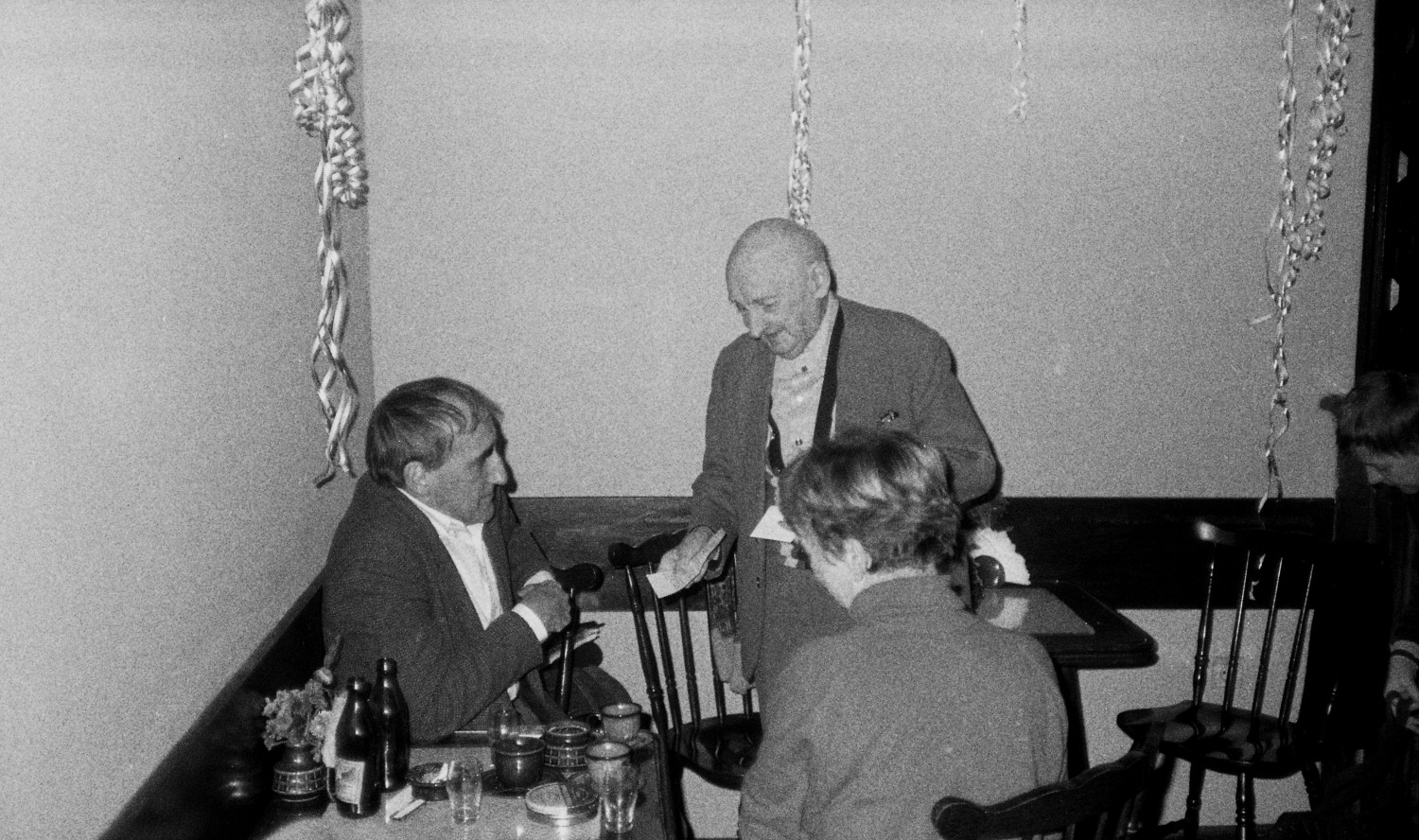
SARP café, 1987. photo: Wiesław Borowski, Foksal Gallery Archive
During our first, so very important, meeting in Paris in 1970, Daniel Buren, Michel Claura and Seth Siegelaub were surprised by our furious attacks on communism. That was not what they had expected of their visitors from a ‘better, socialist world’.
But in 2017, Artur Żmijewski, an artist whose political engagement combines integrity and efficacy, shared the following opinion with me:
The act performed by Adam Szymczyk in transferring that most important international festival, documenta 14, from Germany to Greece, is so powerful politically that every artistic work with political aspirations will be as nothing against the political power of that act.
Does this mean, inter alia, that, in working within the framework of art, we are condemned to singularity and separateness? There was, de facto, something in our ‘anti-strategy’ period at the Foksal which might be acknowledged as a deficiency. The specific and singular nature of our activities following the ‘one-time art’ principle effectively holds its own against any kind of generalisation and, hand in hand with that, against revolution and against any and every positive concept of politics.
In contrast to the fight against the capitalist system in the West, our ‘haphazard’ strategy made no pretence of overthrowing the system and replacing it with a different one. Who knows? Did that spring from a sense of powerlessness in the face of the conviction that, in all its corpse-strewn road to communism, the oppressive system of socialist realism was eternal? Or did it arise from its own kind of contempt for authority of any kind? Politics in its full and true dimension returned to Poland at the end of the nineteen eighties. That was the work of a strictly political opposition and the result was the Solidarity movement[4]. However, from the height of our artistic individualism, we at the Foksal took no active part in that opposition.
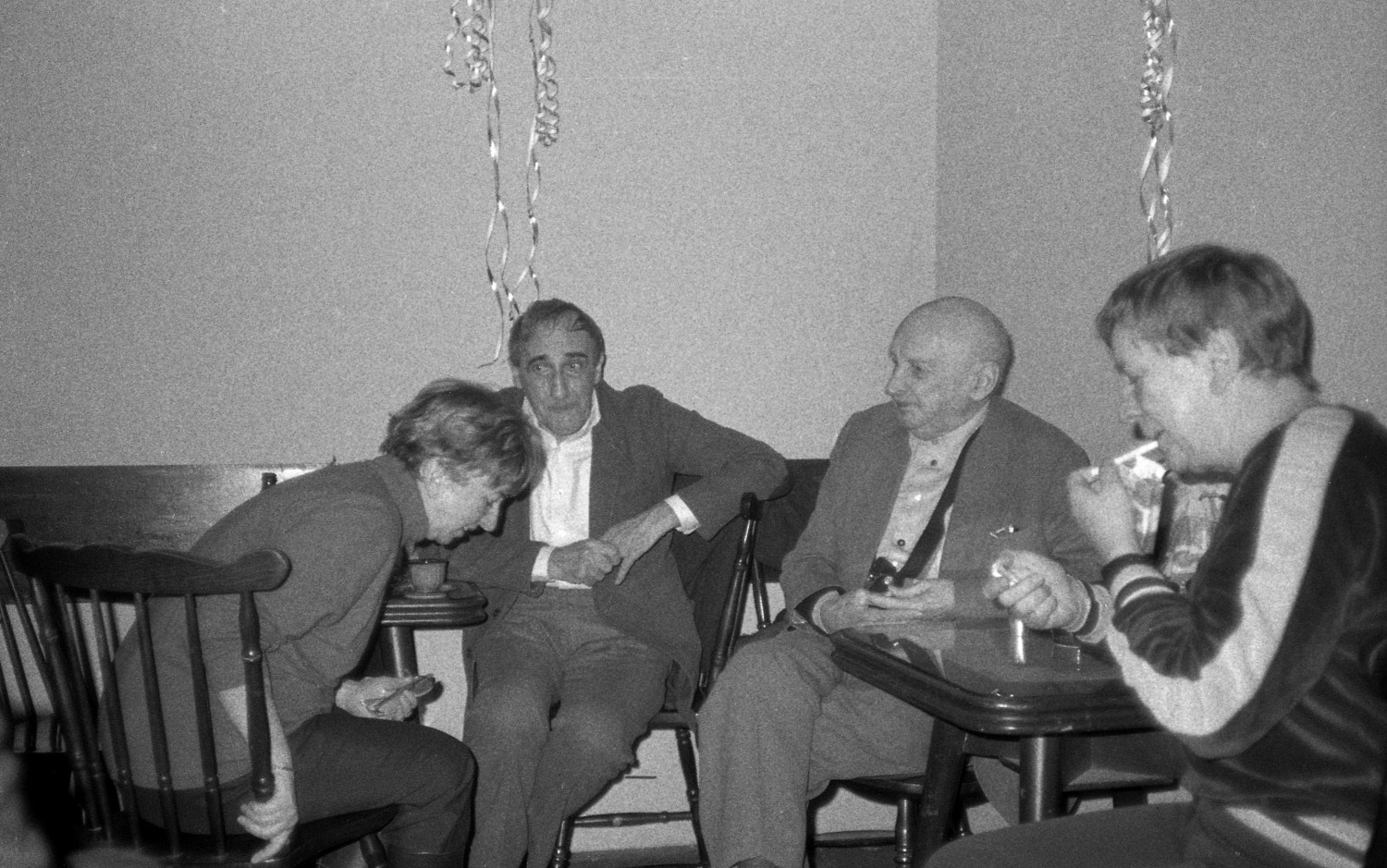
SARP café, 1987. photo: Wiesław Borowski, Foksal Gallery Archive
Our response to the government repressions of March 1968[5] was the Zalesie[6] Ball, entitled Farewell to Spring. It was held at our house in Zalesie amidst the mood of national mourning triggered by the mass arrests, under circumstances of police invigilation and a prohibition on gatherings of more than three people. No doubt about it, our Ball was sheer impertinence. Not only toward the authorities, either, but also, in parallel, toward the patriotic and anti-regime moods of ‘half of Polish society’. Holding a ball when the best of us were incarcerated in prisons could, at the very least, be acknowledged as tasteless. It suited our opposition toward the world, our individualistic and anarchistic attitude, which wished to identify neither with politics nor with any system of values imposed from on high. Our weapons were humour and fun ‘as undervalued antagonists to any authority and as the most difficult to control’. Around eighty courageous people came from all over Poland to take part in the Ball. Kantor arrived, as well, straight from the May revolution in Paris.
In some measure, these facts relativise the expectation expressed by Florian Fauché; “we need to bring back the Foksal”. For a question hangs over the gallery. Was it a matter of abdication or of extending the battlefield? At this point, it is worth quoting the New Rules for Co-Operating with the Foksal Gallery, dated October 1969, and then touching upon the consequences.
We announce a cessation in the activities of the Foksal Gallery PSP as a site of artistic exhibitions, happenings and manifestations of any and every kind. The gallery has realised that it is a place of privilege, a place where everything is possible. Possible and authorised.
So act beyond it as if you were acting here! Everything is possible, everything is authorised. Act in places with other designations (this is a condition for our co-operation), publicly or privately (depending on your inclinations).
The gallery takes upon itself the responsibility of reporting on your doings and documenting them.
Within the gallery, we will run open, public and permanent information sessions.
So send material (photographs, films, descriptions, documents).
There is no need to bother in person.
You are not encumbered by transport problems or concerns about insuring your works. Neither are we[7].
Krzysztof Niemczyk[8] reacted like lightning to the New Regulation’s proposal, which was an undisguised invitation to revolution. His response was an ingenuous political action which took place in the restaurant of the Grand Hotel in Krakow and was entitled Waiters, Today You Tip Us. The idea was that, at a certain moment, the guests gathered there at a feast would all hand the waiters sheets of paper containing the abovementioned proposal.
There is every likelihood that it was Niemczyk himself who wrote the denunciation to the militia which warned them of a massive, hippy manifestation. The upshot was that Krakow’s Old Market Square was surrounded by militia paddy wagons, the streets leading to the Grand Hotel were closed off and the diners in the restaurant were removed to the militia station, with the exception of Krzysztof’s mother. And so the militia played its role perfectly… only the scenario was Niemczyk’s.
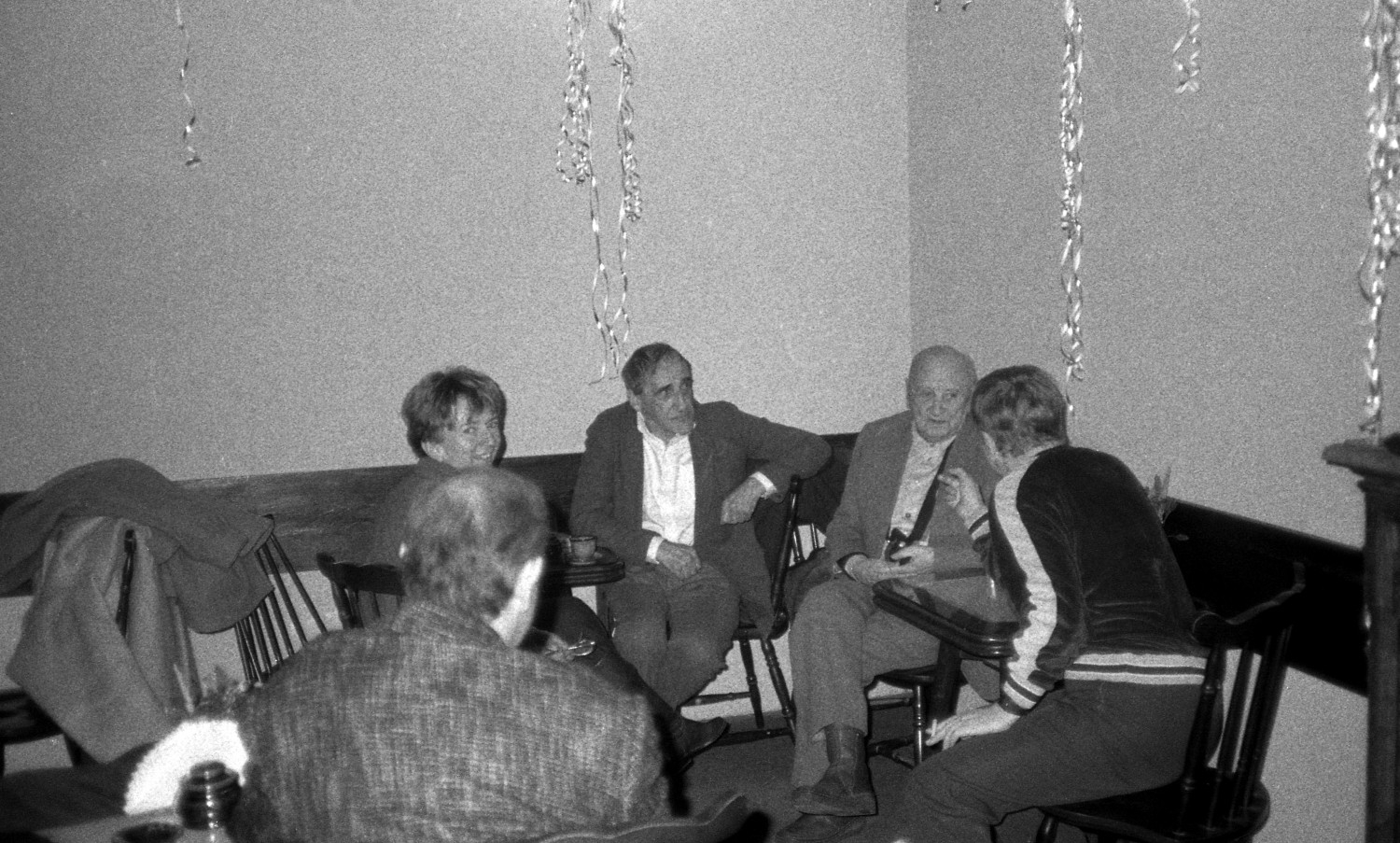
SARP café, 1987. photo: Wiesław Borowski, Foksal Gallery Archive
What does today’s paradox involve and where is it taking us?
In reality, the ‘political nature of art’, in other words, the critique of liberal capitalism proposed by artists, is becoming not only liberal capitalism’s faithful ally, but also its building blocks. The nature of the goods proffered under the mandatory banner of ‘political engagement’… yes, yes, this is about goods, with their prices being run up through ever ‘bolder’ critical excesses… is purely verbal. This means that, having become the mandatory banner of contemporary artistic work, the ‘political nature of art’ is actually a hollow convention and sheer hypocrisy with an ecclesiastical aftertaste. This barefaced mendacity is presently the gauge for artistic ethics. At this point, I would remind you that the number one enemy of the historical avant-garde was untruth.
Let us return to the Foksal. I can see a place here for a statement of Henryk Stażewski’s which was often quoted back then:
Art is an unceasing fight. The artist must die in that fight. The engaged critic adopts the same attitude as the artist and must also die.
I see no encouragement to martyrology and torment in that. It is more a matter of the perspective which hangs uncertainly, albeit tenaciously, over the future of art, tempering its victorious visions and the actions following in their wake. Conceivably, that perspective, like the equally tenacious vision of the end of art, is a negative stimulus to art’s non-mendacious development.
And as for ‘bringing back’ the Foksal, in the current situation, I would suggest focusing on a purely practical message: ‘Never resort to the enemy’s methods’.[9]
Translated from the Polish by Caryl Swift
[1] ulica – street / Street – transl.
[2] Zbigniew Gostomski, Edward Krasiński, Roman Owidzki, Henryk Stażewski, Jan Ziemski, the catalogue for the first exhibition at the Foksal Gallery, Państwowe Przedsiębiorstwo Pracownie Sztuk Plastycznych, Warsaw 1996.
[3] Milcja Obywatelska – Citizens’ Militia, the national police organisation in the communist People’s Republic of Poland – transl.
[4] The Independent and Self-Governing Trade Union ‘Solidarity’ was founded at the then Lenin Shipyard in Gdańsk in 1980 as a result of worker protests. For the next nine years, it continued to use civil resistance to press for workers’ rights and social change, eventually entering into the negotiations with the communist government which led to the first multi-party elections in Poland in more than forty years – transl.
[5] A series of strikes and protests against the communist regime took place in March 1968. Many of the protesters were students. The security services suppressed the strikes in all the country’s major academic centres. The dissident movement was vigorously repressed. At the same time, the authorities carried out a powerful anti-Semitic campaign, which claimed to be ‘anti-Zionist’ and led to the mass exodus of Jews and people of Jewish origin – transl.
[6] A village near Warsaw – transl.
[7] Published in French in “Les Lettres Françaises”, 1971, No. 1370, pp. 27-29.
[8] Krzysztof Niemczyk (21st May 1938-19th January 1994) was a performance artist, writer, painter and musician – transl.
[9] Tadeusz Kantor said to us: “The most important thing is to find your enemy” and “I have to have a wall I can bang my head against”.
Imprint
| Index | Anka Ptaszkowska Edward Krasiński Foksal Gallery Henryk Stażewski Maria Stangret Mariusz Tchorek Roman Owidzki Tadeusz Kantor Wiesław Borowski |
